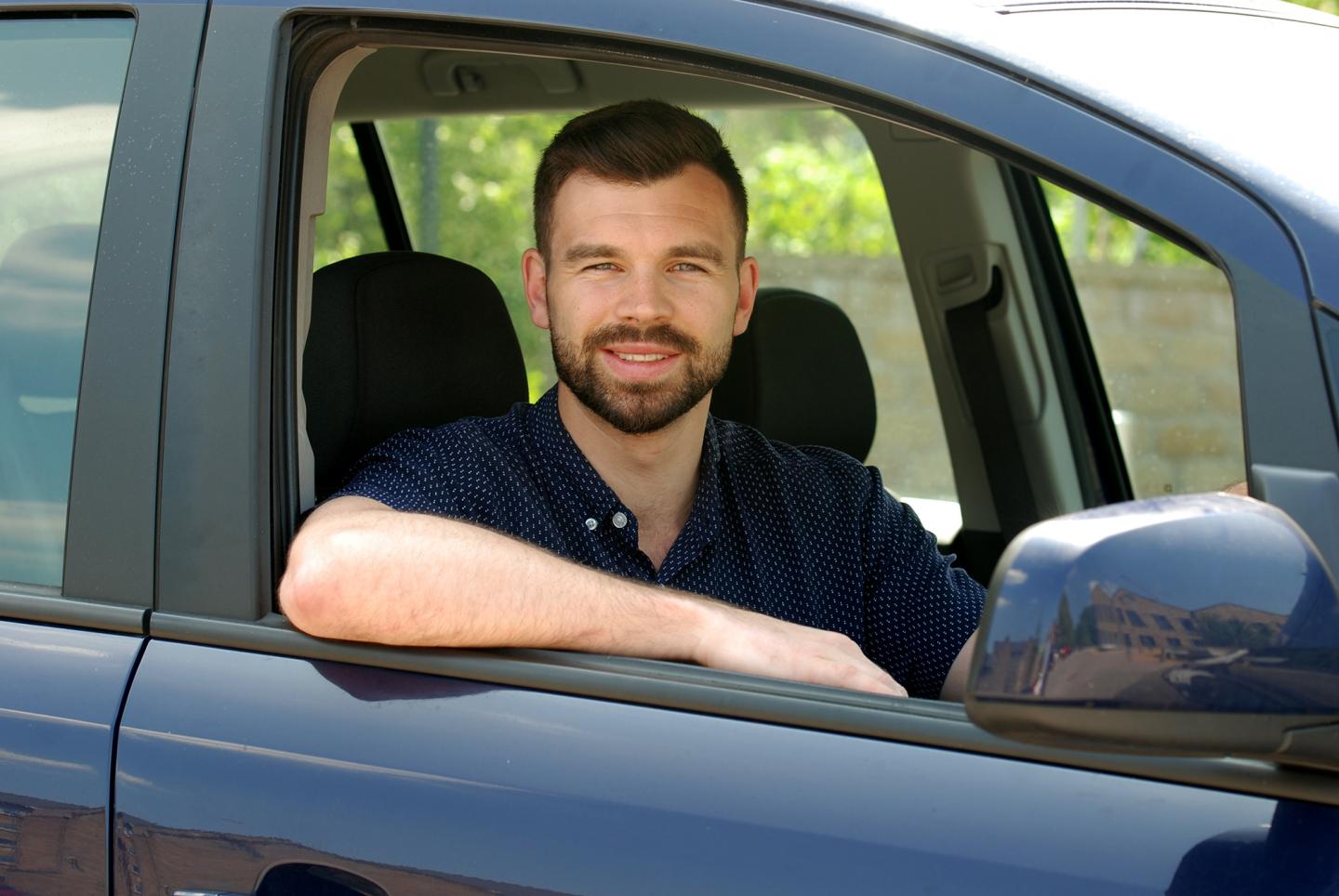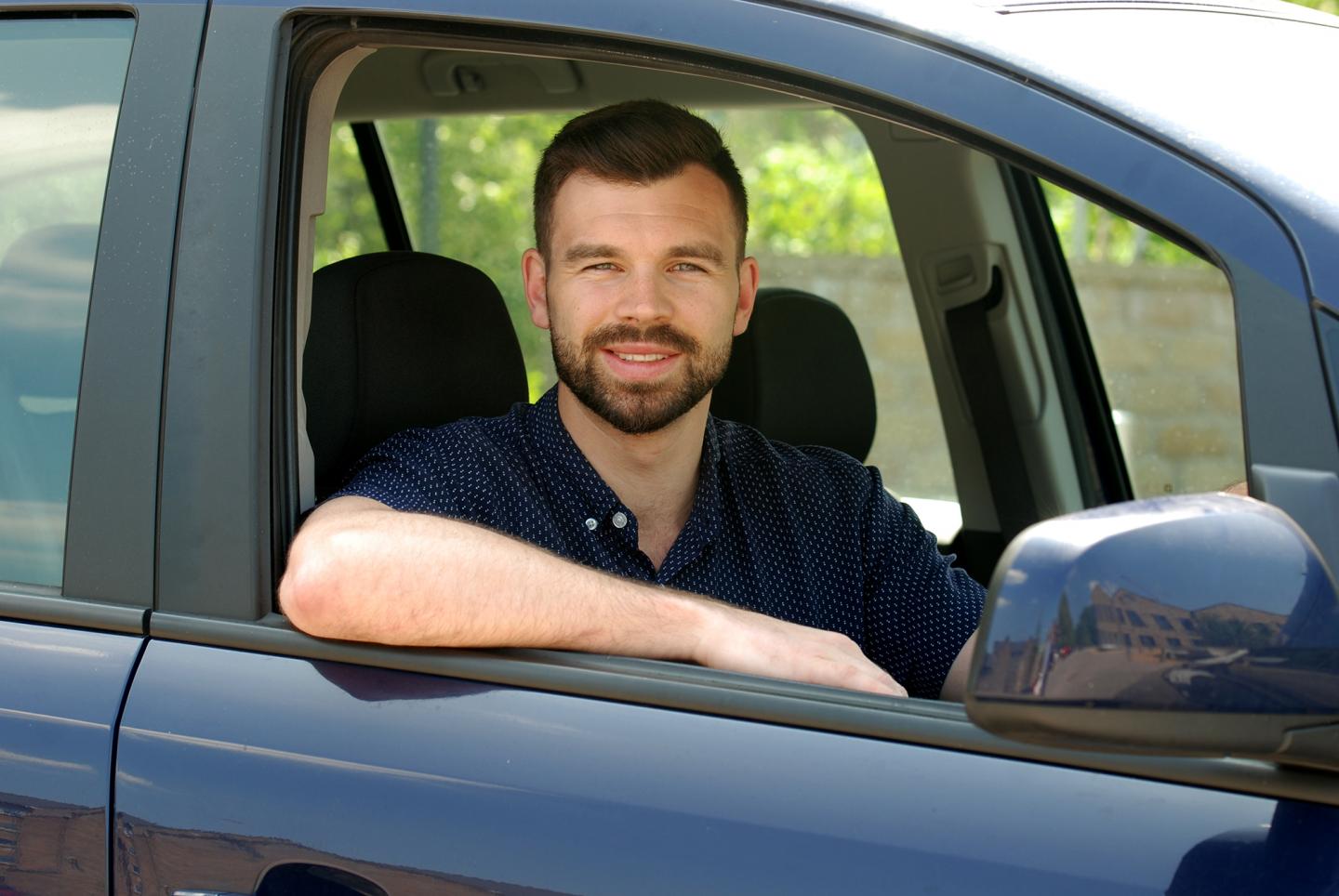
Credit: University of Huddersfield
FROM sat-nav to automated parking and collision avoidance systems – cars are equipped with an increasing array of electronic aids designed to reduce the scope for human error. One of the latest pieces of kit is an app that provides assistance at traffic lights, telling drivers when they will have to stop and how long before they can move off.
It has provided the University of Huddersfield's Dr Kyle Wilson – a psychology lecturer who specialises in investigations of the human factor – with a "naturalistic" research project that has led to a conference presentation and a new article.
Marketed by an American company, the smartphone-based app is named EnLighten, and can be used in urban areas where the traffic signals are centrally connected.
"The intention of the app is to improve traffic flow and reduce driver stress. As you approach a traffic light, your smartphone will give you an alert over whether you are likely to make it through or likely to have to stop," said Dr Wilson.
Then, while the car is stopped, the phone's display tells the driver how long before they get the green light.
"When it gets down to five seconds, that disappears and you get an auditory chime. The intention is to get the driver to look back up at the real traffic signal and go when they turn green.
"My first reaction was that it was interesting and I could see it being useful in some regards – but that it could be dangerous too," said Dr Wilson.
His findings are that the app – when it works – can indeed reduce drivers' stress levels and cut the time it takes for them to move off at intersections. But the technology was prone to frequent malfunction, leading to higher stress and slower response to green lights. It also furnished a wider lesson about technology and the human factor.
"It is yet another example of the fact that when automation isn't that reliable, it can have the opposite effect to that you actually want. So not only did we see people move slower, but it stressed them out more and when this technology was malfunctioning, people would actually fixate on it," said Dr Wilson.
He was engaged to carry out the research by a transport centre looking at congestion issues. It wanted to know if the traffic lights app could help. Currently, no UK cities have fully connected traffic signal networks, a system that has been introduced in some U.S. urban areas and in cities that include Christchurch, in Dr Wilson's native New Zealand.
That is where he went to carry out the research. Five local motorists were recruited and monitored on four journeys through the city – three with the app and one without, as a baseline. Their behaviour was observed and their stress levels appraised during an exercise that Dr Wilson describes as a "naturalistic investigation".
The reliability of the EnLighten app needs to be improved, he said. Its countdown feature frequently failed, although it never created a safety hazard by indicating that a car could move off while lights were still at red.
But it seems likely that the technology will be integrated into the new wave of "connected vehicles", meaning that the car rather than the driver will interpret the countdown, so that malfunction could have more serious implications. This means it is especially important to improve the reliability level.
###
* The results of the project in Christchurch were presented at the 2017 conference of the Chartered Institute of Ergonomics and Human Factors, and an article titled Driver Interaction with a Traffic Light Assistant App: A Naturalistic Investigation appears in the published Proceedings of the conference. It is authored by Kyle Wilson, with Karl Bridges, Paul Ward, Simon Parkinson, Tyron Louw and Ryan Cooney. See also http://eprints.hud.ac.uk/30948/.
Full citation:
"Wilson, K. M., Bridges, K., Ward, P. W., Parkinson, S., Louw, T., & Cooney, R. (2017). Driver interaction with a traffic light assistant app: A naturalistic investigation. In R. Charles & J. Wilkinson (Eds.), Contemporary Ergonomics & Human Factors 2017: Proceedings of the Annual Conference of the Chartered Institute of Ergonomics & Human Factors (pp. 143-150), Daventry, UK.
Media Contact
Nicola Werritt
[email protected]
01-484-473-315
@HudUniPR
http://www.hud.ac.uk/
############
Story Source: Materials provided by Scienmag





